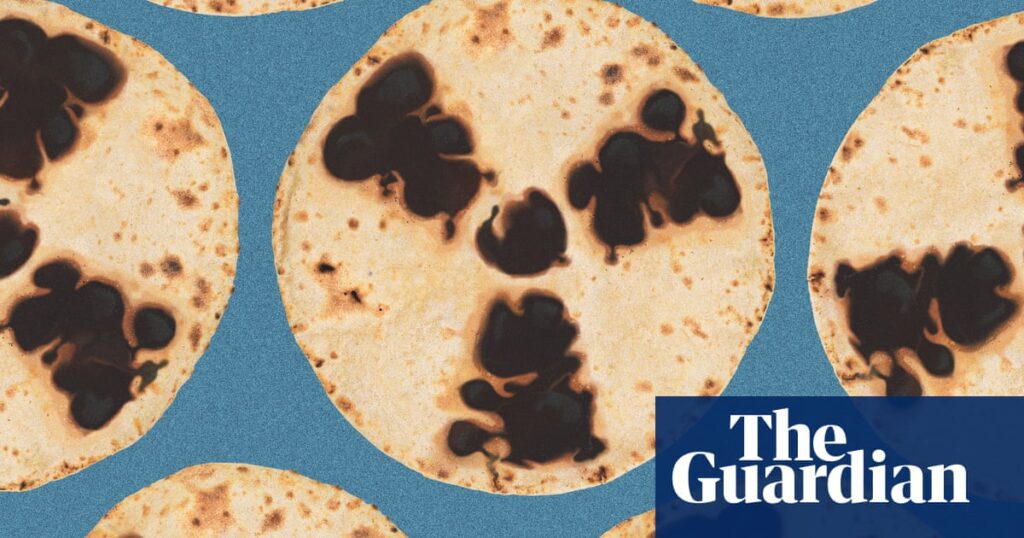In 2019, Shahnaz Akhter, a postdoctoral researcher at Warwick University, engaged in a conversation with her sister who brought up a Channel 4 documentary from the mid-1990s. This film explored human radiation experiments, notably one from 1969 in Coventry, where 21 Indian women were allegedly fed chapatis made with radioactive isotopes without their consent as part of a study on iron absorption.
Growing up in Coventry’s close-knit South Asian community, Akhter was astonished to discover she had never heard about such an experiment. Her further investigation revealed a 1995 inquiry by the Coventry Health Authority that assessed the health risks posed to the subjects and whether they had given informed consent. However, the report only included a minimal acknowledgment of the women’s voices, stating, “At the public meeting, it was stated that two of the participants who had come forward had no recollection of giving informed consent.”
This brief acknowledgment moved Akhter to tears. “I thought of my own mother,” she recalled. “These women showed tremendous courage in coming forward, yet their experiences were dismissed.” Determined to connect with the women and their families, Akhter felt apprehensive, especially with the Covid pandemic exacerbating challenges for ethnic minority communities. She reached out to local Labour MP, Taiwo Owatemi, who expressed her shock at the revelation and shared Akhter’s concern about the potential risks of discussing this historical injustice amid vaccine hesitancy. Hence, instead of a public appeal, Akhter quietly sought information within her community.
Coincidentally, during this time, historian and broadcaster Dr. Louise Raw stumbled upon old reports about the radioactive chapatis, including a follow-up story in India Today from 1995 that prompted memories of the documentary she had watched. Intrigued by this hidden history, Raw felt it warranted more attention, perhaps even a parliamentary inquiry or compensation. In August 2023, she began tweeting about it, framing the story for a social media audience around a post-pandemic backdrop, where trust in the healthcare system was at an all-time low and discussions of identity and racism were prevalent.
The initial tweet quickly went viral, garnering 9,000 retweets and being viewed by 7 million people. TikTok videos reciting the story attracted thousands of views, catching the attention of mainstream outlets like the Guardian, BBC, and Daily Mail, which focused on Akhter and Owatemi’s efforts to connect with the affected families.
The resurfacing of this story stirred significant anxiety within Coventry. While the experiment involved 21 women, Owatemi was inundated with messages from concerned individuals fearing their mothers or grandmothers could have been part of it. Among them was Kalbir, a woman in her sixties from Coventry’s Punjabi community, who discovered her mother had participated after forwarding Raw’s tweet to her siblings. This revelation was devastating, as Kalbir had lived away from home and had never been informed of it. Her mother had passed away two decades earlier, leaving Kalbir with haunting questions about what transpired: “What happened? What aftercare was provided? What were the implications? Did this affect their health?” She worried that she and her siblings might have also consumed the contaminated chapatis since the family shared meals.
Seeking clarity, Kalbir, an outspoken and determined woman, endeavored to access her mother’s medical records but faced numerous obstacles: the doctor’s practice no longer existed and confidentiality laws persisted even after death. Meanwhile, Akhter and Owatemi soon found themselves at an impasse as well. The Medical Research Council (MRC), responsible for funding and coordinating health research in the UK, could not provide documentation from the study, not even a list of participants. Although following inquiries indicated the level of radiation exposure was minimal, the lingering concerns remained serious for many, including Kalbir. “I vividly remember my mother being quite ill and feeling like she was at death’s door,” she recounted. “Without definitive information, we only craft narratives in our minds.” The chilling aspect is combined with anxiety over potential health repercussions from non-consensual experiments.
Despite the experiment occurring over fifty years ago, it rekindled strong emotions and reflected broader disparities in racial health and exploitation by the medical system. Untangling the truth from ensuing panic now posed a significant challenge. What genuinely occurred in Coventry in 1969?
In the early 1960s, Peter Elwood, a young and ambitious epidemiologist hailing from Belfast, began analyzing how to combat a significant health issue globally—anemia. Often stemming from iron deficiency, anemia leads to an inadequate production of healthy red blood cells, affecting oxygen distribution to the organs. Symptoms include fatigue, and when severe, it may impede cognitive growth in children and increase risks for premature birth in pregnant women. Today, the World Health Organization still classifies anemia as a serious public health concern.
While in Belfast, Elwood, engaging in a discussion with a colleague about improving anemia treatments, acknowledged the limited effectiveness of prescribing iron tablets through GPs. This led to an exploration of alternative ways to enhance iron absorption—initiating a decade-long study culminating in the radioactive chapati experiment. In 1963, after relocating to Cardiff to join the Epidemiological Research Unit of the MRC, Elwood initiated various studies focusing on iron in bread and how different dietary components could alter absorption effectiveness.
By the late 1960s, he incorporated an innovative research method: radiation. Historically, iron absorption assessment required considerable time. However, with radioactive iron isotopes, streamlined studies could yield quick results as the isotopes effectively tagged the iron, enabling precise tracking of absorption within the body. By the mid-1950s, while concerns about radiation exposure leading to increased cancer risks emerged, medical researchers were still captivated by its potential for expedited, accurate studies.
Elwood’s adoption of radioactive isotopes coincided with a paternalistic approach within medicine, wherein physicians often felt they could best assess risk for their patients without needing informed consent. Despite the introduction of the Nuremberg Code after WWII—which emphasized the essential nature of voluntary consent—the guidelines lacked influence over many researchers in the UK and US, who misguidedly believed it applied only to heinous war criminal practices.
Throughout the 1960s, two physicians highlighted the ethical shortcomings in medical research, particularly the absence of consent and unjustifiable risks involved in studies. This ignited a growing awareness about unethical practices, which persisted as Elwood pursued his research on iron absorption in the 1960s, even amid a lack of formal guidelines governing radiation use in human studies.
In 1968, Elwood published findings from a volunteer experiment involving colleagues and friends, who were given daily meals containing bread fortified with radioactive iron salts. This study received notable media interest, with Elwood gaining recognition as he was invited to join the World Health Organization’s Committee on Iron Deficiency. Upon acknowledging that his bread study had limited contextual relevance for countries where anemia posed a genuine issue, the committee urged him to replicate the study using chapatis.
Thus, Elwood employed an Indian housewife to educate Welsh women on preparing chapatis, generating 200 irradiated chapatis for freezing. Subsequently, he sought participants among South Asian women who had maintained traditional diets. He settled on Coventry, where Punjabi migrants resided. A local GP in Foleshill, Dr. Shah, played a crucial role by referring women to the study.
Discrepancies arose later about Dr. Shah’s communication with the 21 women referred to the study. Although he was regarded as amiable, it remained unclear if he sufficiently conveyed the study’s real intentions. In 1969, a seven-year-old Kalbir lacked awareness, but she expressed doubts about her mother comprehending the gravity of the situation. “There was considerable trust in doctors during that era,” she stated.
After Shah identified the women, they were briefed by the research team. According to a subsequent MRC investigation, team members, including Elwood, personally explained the study’s objectives and the involving radiation exposure. However, many of the communications were in English, and the majority of the women spoke Punjabi or Pothwari, with some unable to read at all. Translation challenges had influencers such as a health visitor who spoke only limited Punjabi and children often inadvertently translating critical information.
Despite these obstacles, the study proceeded. For four mornings, the women were instructed to consume the irradiated chapatis delivered to their homes. A field worker would later return to verify consumption. After 17 days, participants were transported to Harwell Laboratory for testing. Elwood positively recalled the experience, claiming warmth and camaraderie developed throughout the project and painting a picture of a supportive environment. However, for the women, being transported to such an imposing facility likely presented a starkly different, intimidating reality.
The 1970 study discovered that chapatis did not yield better iron absorption compared to bread. Unfortunately, the women were never notified of these results, representing a standard protocol of the time where following up with participants lacked priority. Over the years, the incident seemed to fade into obscurity until resurfacing in the mid-1990s when filmmaker John Brownlow was researching parallels to human radiation experiments in the US.
Discoveries of unethical research in the UK drew Brownlow to a study titled “Absorption of Iron from Chapati Made from Wheat Flour.” This prompted his team to connect with Pritam Kaur, one of the participants. Kaur conveyed that when she sought advice from her GP regarding migraines, he suggested they investigate potential anemia. Years later, she regretted her involvement, revealing she would have declined if she had known about the study’s true nature.
Following the documentary aired on Channel 4 in 1995, public concern escalated. The documentary detailed various UK and US studies that raised substantial ethical concerns. The fallout from the film was intense, leading to inquiries and elevating the conversation around consent within minority communities. For several years, local authorities in Coventry set up help lines for worried residents while the health authority conducted further inquiries, drawing fierce public relations challenges for Elwood. Although subsequent reports offered reassurances regarding ethics and low radiation exposure, many women felt their voices were ignored, with the primary report only briefly addressing consent issues.
Despite no follow-up studies or compensation in the UK, the story elevated discussions around historical injustices, culminating in calls for a public inquiry and apologies for the women involved. Although challenging due to a lack of available records, efforts are now underway to trace the identities of those impacted. Akhter continues her outreach to affected families and aims to gather their experiences while the MRC has engaged outside researchers to better understand the trust dynamics within minority communities.
As the issues surrounding the Coventry experiment resurface, it exemplifies the long-standing mistrust that lingers in ethnic minority communities toward healthcare and research practices. Kalbir’s plea for justice echoes the sentiments of many felt over the decades—a call for honesty and accountability, emphasizing that this should not have happened. “These women faced immense challenges in England and didn’t grasp the medical research paradigm. They relied heavily on trust, which was tragically misplaced,” she reflected.


